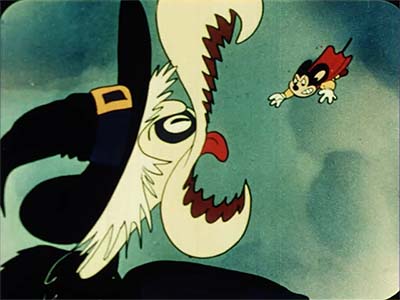
People who aren’t members of Animation Resources don’t understand how comprehensive our Reference Packs are. Today we are sharing the current Bonus Archive. If you are an annual member of Animation Resources, click on this post to go to the Bonus Archive page. If you aren’t a member yet, today is the perfect time to join! You’ll get six new RefPacks a year. Sign up for a General or Student Membership and you’ll get access to the special Bonus Archive with even more material from past Reference Packs.
These downloads will expire September 1st.
What are you waiting for?![]()
JOIN TODAY!
https://animationresources.org/membership/levels/
Annual Members LOGIN To Download
JOIN TODAY To Access The Bonus Archive
PDF E-BOOK:
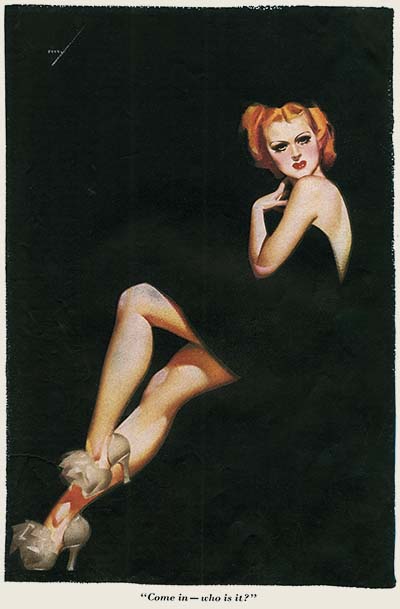
Esquire Magazine![]()
Cartoon Annual Volume 2 (1937)
Esquire was the leading "gentleman’s magazine" of its day. Great writers like F. Scott Fitzgerald and Ernest Hemmingway wrote for the magazine, and the Esquire staff included a stable of illustrators and cartoonists that represented the best in the field. Even though it was founded in the height of the depression, the publishers spared no expense to produce a first class product. The cover price was fifty cents, many times the price of any other magazine on newsstands at the time. Hugh Hefner began his career as a copy editor at Esquire in the late forties, and it’s clear that his vision of what Playboy would become was greatly influenced by Esquire.
In 1937, the staff of Esquire prepared a prototype copy of a proposed cartoon annual containing the best cartoons from the first few years of the magazine’s publication. However before the book could be printed, the project was cancelled and the prototype was put on the shelf. Twenty years later, they finally did publish a book honoring the great work of the Esquire art staff, but it was a much different selection of cartoons. Animation Resources was given access to the one-of-a-kind prototype of the 1937 book, and we will be sharing it with our members in this, the second of three e-books. We hope you find it to be useful.
Adobe PDF File / 102 Pages / 353 MB Download
Annual Members LOGIN To Download
JOIN TODAY To Access The Bonus Archive
DVD QUALITY VIDEOS:![]()

Two Films By Lotte Reiniger![]()
"Papageno" (1935) / "10 Minutes of Mozart" (1930)
Lotte Reiniger is one of the most important figures in the history of animation. She made the oldest surviving animated feature film, “The Adventures of Prince Achmed”, she pioneered the merging of animation and music, and developed a multi-plane camera stand over a decade before anyone in Hollywood built one. If you don’t know about her, please see her Wikipedia page for an overview.
https://en.wikipedia.org/wiki/Lotte_Reiniger
At Animation Resources we often get asked what relevance old animation has to modern animation. How does a film made with paper cutouts relate to animation made on a computer? Well look at Reiniger’s films for a clue…
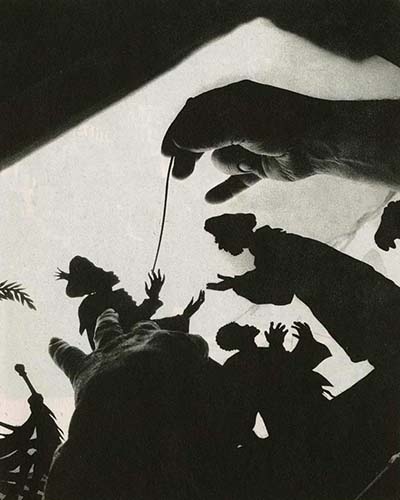
The technique utilized flat paper puppets that were jointed. The posing and movement were dependent on the design of the puppet. Replacement of heads and legs and arms were used to achieve different poses. That isn’t terribly different than the assets used in a Flash cartoon. Her camera stand and puppets weren’t capable of moving into a scene in perspective, so she had to stage her scenes flat with characters moving through the scenes from left to right. That is exactly how many modern limited animation TV shows are laid out.
Reiniger’s puppets never feel flat or stiff, and their movements never feel limited. In fact, the characters are able to dance, run, jump and act as well as any animated character in any kind of animated film. The staging is flat, yet she employs camera moves alternating left and right to create a visual rhythm to match the music. Even if the characters can’t move deeper into the stage in perspective, Reiniger pushes background elements into the distance below her camera platen to give a feeling of depth. Look at how the timing is so natural and specific to the character. She is expressing personality with the way the character moves. The scenery and costumes are beautifully designed. There is a very good reason for this… if you are going to be showing the audience one puppet or a single background over and over from frame to frame and shot to shot, it should at least be as beautiful as you can possibly make it to maintain visual interest. We haven’t included subtitles for the sung dialogue because it isn’t necessary. The clear silhouettes and expressive posing tells the story better than words ever could.
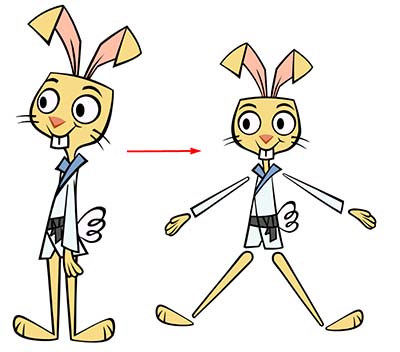
An animator working in the field of limited animation would do well to study and break down how Reiniger achieves her effects. These two films are packed with ideas for how to get the most out of asset based animation. Stop motion and CGI animators can learn a thing or two here as well. Analyze the technique like an animator, don’t look at the films Animation Resources shares with you as an audience does. The purpose here is to inform, not to entertain. Just because a film was made 80 years ago using a technique that is rarely seen today, it doesn’t mean that there’s nothing to be learned from it.
MP4 Video File / 20:55 / 372 MB Download
Annual Members LOGIN To Download
JOIN TODAY To Access The Bonus Archive
DVD QUALITY VIDEO:![]()
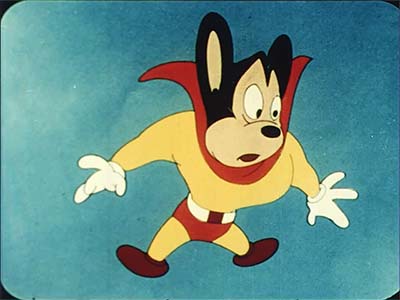
Three Terry-Toons![]()
"String Bean Jack" (1933), Kiko The Kangaroo in "Red Hot Music" (1937), and Mighty Mouse in "Hansel and Gretel" (1952)
Thanks to our Advisory Board member Steve Stanchfield, we have three rare Terry-Toons cartoons to share with you. The Paul Terry Studio has been given a bum rap in most animation history books. Their cartoons are described as being unimaginative and are accused of all looking the same. Nothing could be further from the truth. Terry-Toons don’t just look different from film to film, they often look completely different from scene to scene. What other studio would employ animators as radically different in approach as Connie Rasinski and Jim Tyer to work on the same film? The fast pace of production and the autonomy animators had in approaching their work makes Terry some of the most unpredictable cartoons ever made.
Here are three typical Terry-Toons from different eras for comparison…
"String Bean Jack" starts out looking primitive compared to the West coast cartoons being produced at the same time. The first couple of sequences look more like a 1920s cartoon than one from 1933. But once the hero dog reaches the Giant’s castle in the clouds it becomes increasingly surreal, culminating in an astounding close up of the Giant saying “Fee Fie Foe Fun” with nostrils flaring and eyes wildly rolling around in his head. It almost feels like two different cartoons.
MP4 Video File / 7:28 / 185 MB Download
"Red Hot Music" (retitled "Red Hot Rhythm" in this print) also seems like two separate cartoons. The first half consists of a radio broadcast in New York where inanimate objects come to life and dance. It looks and feels like a Fleischer or Van Beuren cartoon. But when the music turns hot and the fire starts, the style of the cartoon changes to look a lot more like a West coast cartoon. Kiko the Kangaroo was an attempt at creating a “Mickey Mouse” for Terry-Toons, but he is upstaged by the menagerie of better drawn animals that surround him. The effects animation in this film is particularly effective.
MP4 Video File / 6:05 / 264 MB Download
The third cartoon, "Hansel and Gretel" is a later entry in the Mighty Mouse series. It starts out with some ultra-cute characters skipping through the woods. These scenes were animated by the director, Connie Rasinski. But soon the tone of the film changes to a horror movie, with backgrounds obviously influenced by Disney’s "Snow White". The standouts in this cartoon are the fight scenes, in particular a surreal battle between Mighty Mouse and a wicked witch who has taken the form of a buzzard. Most of these crazy scenes were animated by Jim Tyer in his wildest style, and it’s a bit of a shock when the foe is vanquished and the cartoon shifts back to super-cute Connie Rasinski scenes again for the inevitable happy ending.
MP4 Video File / 6:10 / 148 MB Download
Annual Members LOGIN To Download
JOIN TODAY To Access The Bonus Archive
Animation Resources is one of the best kept secrets in the world of cartooning. Every month, we sponsor a program of interest to artists, and every other month, we share a book and up to an hour of rare animation with our members. If you are a creative person interested in the fields of animation, cartooning or illustration, you should be a member of Animation Resources!
It’s easy to join Animation Resources. Just click on this link and you can sign up right now online…
JOIN TODAY!
https://animationresources.org/membership/levels/
![]()
![]() Animation Resources depends on your contributions to support its projects. Even if you can’t afford to join our group right now, please click the button below to donate whatever you can afford using PayPal.
Animation Resources depends on your contributions to support its projects. Even if you can’t afford to join our group right now, please click the button below to donate whatever you can afford using PayPal.

















